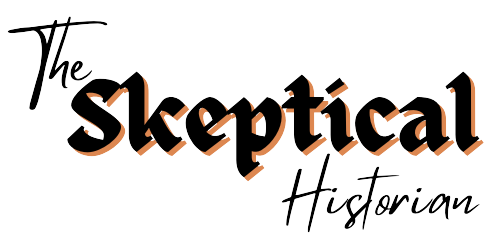His Honour Sir Redmond Barry fixed the notorious bushranger with a stern expression as the verdict was announced.
“Guilty.”
No one in the court was surprised and Barry placed the black cloth on his head and read out the death sentence.
“May God have mercy on your soul,” he intoned ritually.
Ned Kelly stared back at him definitely.
“I’ll see you there, where I go,” he declared.
Barry ignored him and the condemned man was removed from the courtroom. Two weeks later, Ned Kelly died on the gallows at Melbourne Gaol. Some said he muttered “Such is life” before they put the rope around his neck, but others declared he’d said nothing at all.
Twelve days after that execution, Sir Redmond Barry — judge, barrister, founder of the Melbourne Public Library, first Chancellor Melbourne University, and member of the Royal Society — died from complications due to diabetes.
Make of that what you will.
This is a much truncated version of the final exchange between Edward “Ned” Kelly, a notorious Australian outlaw and bushranger, who has become something of a national icon (look out for a podcast episode coming shortly), and Sir Redmond Barry, one of Melbourne’s leading early intellectuals and a prominent judge.
Barry had not only been instrumental in founding the Public Library (now the State Library of Victoria) and Melbourne University, but regularly donated to good causes, had funded the building of benevolent asylums, and (rather scandalously) had acknowledged all his children, despite never marrying their mother. This last part wasn’t Barry’s choice, he would have married Louisa Barrow, the love of his life, if he could, but her husband spitefully refused to divorce her. Anyone who was anyone in Melbourne knew that Sir Redmond and Mrs. Barrow weren’t married, but wealth and power went a long way towards buying respectability in the colony.
Before becoming a judge, Barry had been a prominent lawyer, known for defending Indigenous people for free and passionately arguing for their rights in court. When he became a judge, one of his most famous trials had been that of the thirteen men from the Eureka Stockade, charged with high-treason. To his great satisfaction, all had been found not guilty. He’d become more conservative the longer he sat on the bench, but he was generally regarded as a fair man.
As for Ned?
Well, Ned was a poor man, from the country, whose family had suffered from intense police persecution. This wasn’t unusual, most of the large, Irish Catholic family in rural Victoria faced prejudice, but things went badly for Ned when he shot at a police officer one night and then went on the run (the details of this incident are hotly contested, I’ll go into them in more depth on the podcast). He then murdered three more policemen in an ambush, before heading off to the towns of Euroa and Jerilderie to rob the banks and hold the unwilling townsfolk hostage. He was captured in the town of Glenrowan, and the rest of his gang were killed. They faced off against the police wearing bulletproof armour made from stolen ploughs.

Ned Kelly’s suit of armour, on display at the State Library of Victoria, 2023.
This armour has since become a famous symbol and Ned’s suit is on display at the State Library of Victoria, along with his rifle and a boot he was wearing when he was captured. It’s had a few different homes in its time at the library, most recently in the South Rotunda, but now it’s on the move again to what will be its permanent home in (drumroll please)…
The Redmond Barry Reading Room!
I can’t help but have a chuckle at the historical irony of it all. Ned Kelly’s armour, displayed in the reading room named after the judge who sentenced him to hang, and whose death he predicted.
I wonder what the two men in question would have thought of it all.
*
Ned Kelly’s armour is now on display in the Redmond Barry Reading Room at the State Library of Victoria, which you can visit in Melbourne, free of charge. While you’re there, be sure to check out Studio 4, former home to The Skeptical Historian!
The photo accompanying this post is from State Library Victoria.

